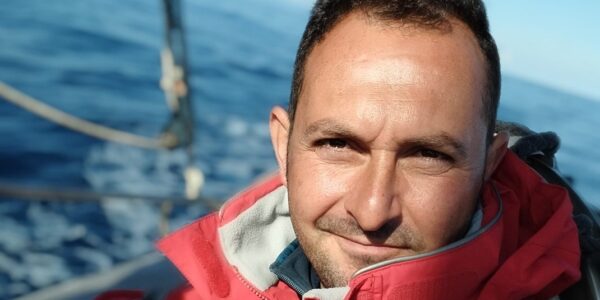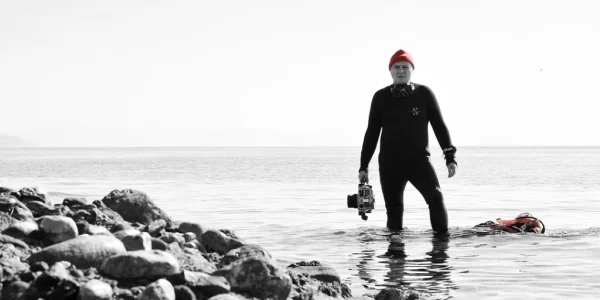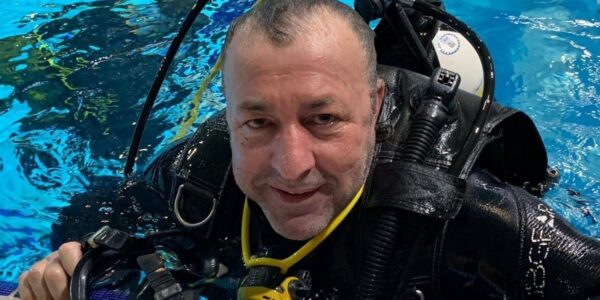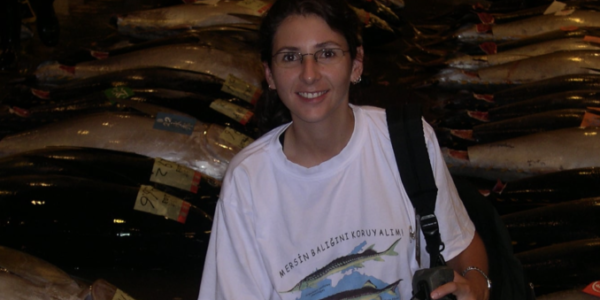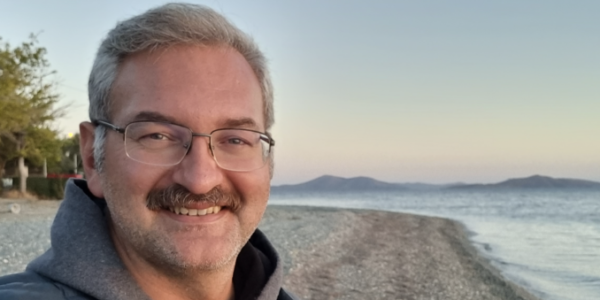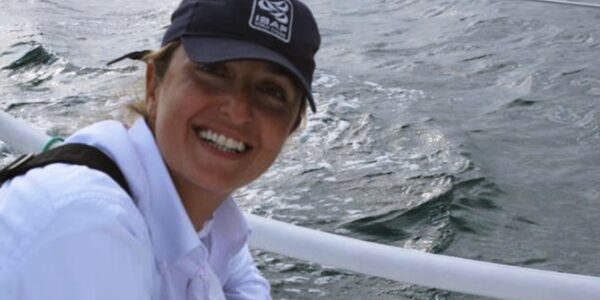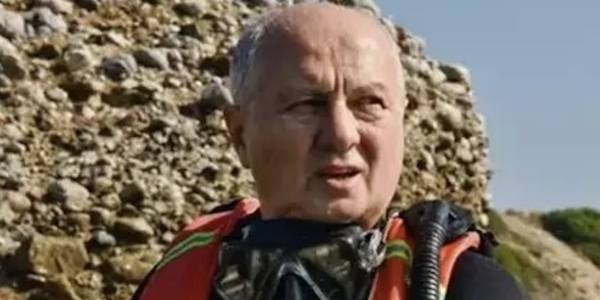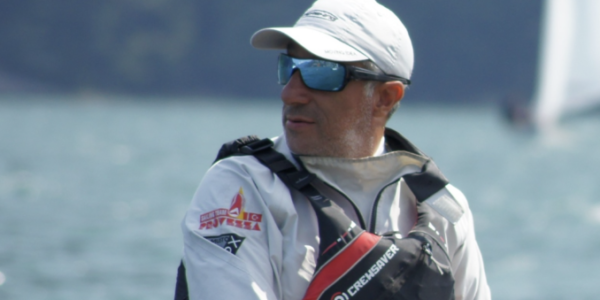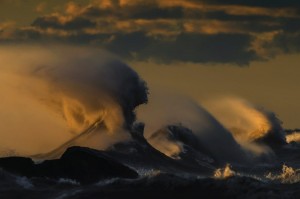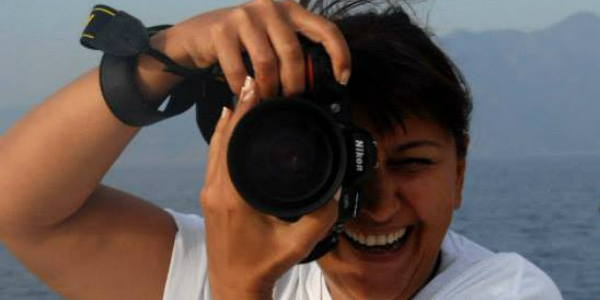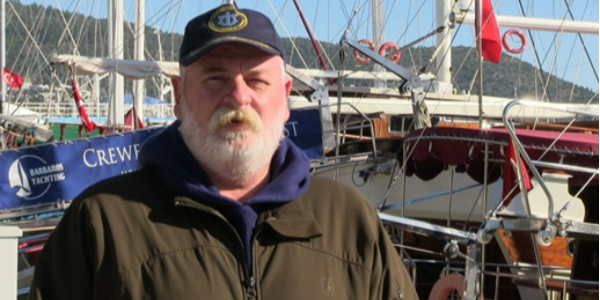Herman Melville understood the full power of the Great Lakes. In Moby Dick, his triumphant 19th century novel about American whaling, Melville described the Great Lakes as “grand freshwater seas.” He wrote of “dismasting blasts as direful as any that lash the salted wave,” winds that “have drowned full many a midnight ship with all its shrieking crew.”
That is the spirit Dave Sandford set out to capture, last November, when he walked into Lake Erie.
“There’s something about Erie, the way it changes and how moody it is, that’s different from any of the lakes,” Sandford said. “There’s emotion in these images that stirs something in people. There’s something alive about that lake that’s completely different.”
If you grew up in Western New York, along Lake Erie, you know what he means – and you’ll recognize the raw and savage beauty in Sandford’s photographs. He was raised in London, Ont. Sandford built a career as a sports photographer, and he’s been here many times to shoot Sabres and Bills games.

“The Witch of November:” Lake Erie near Port Stanley, Ont., a year ago. (Photo used with permission of David Sandford)
But his passion is nature photography. He has photographed whales and great white sharks and the frozen regions of the world. Still, Sandford felt in his gut that there was something mysterious and primal about Lake Erie that was “right under our noses,” a quality so wild and untapped it was easy to take for granted. As a child he’d spent countless hours at Port Stanley – about two and a half hours from Buffalo – swimming in the lake and enjoying the beach.
Yet the lake he found most compelling was the lonesome one he saw every November: The winds would come up and lift dark water in a fury above the empty beach, while storm clouds joined with the pale sun to give the sky the color of a bruise.
He had a cousin who kept clippings and accounts of shipwrecks on a cottage wall. Sandford was familiar with “the mystique and legends of Lake Erie, the tales of how the lake is haunted, the stories of the storm hag and the ‘witch of November’” – legendary personifications of the wreck-causing winds that howl in late autumn.
Sandford knew every community along the shoreline has lost people to the lake, and how anyone who lives in proximity to Erie respects its violent and mercurial personality, a result of being shallowest – and thus most volatile – of the Great Lakes.
Over several weeks last November, in a wetsuit and carrying Canon gear, Sandford set out at Port Stanley – amid bitter winds – to witness and photograph the essence of that Lake Erie.

“Purple Rain:” Another Dave Sandford image of Lake Erie, amid a storm. (Photo used with permission of David Sandford)
Sometimes, he said, he would walk out into the water, rocked by waves powerful enough to upend him and slam him against the sand. Sometimes the storm conditions were too much and Sandford had no choice except shooting from the beach.
The result became an Internet sensation.
He captured a lake many in Western New York will recognize, the lake that claws relentlessly at breakwalls and pounds against cliffs. Sandford has photographed the oceans many times, and he said the waves he saw in Erie are distinct from the ones he’s witnessed in the sea: The water careens in a fashion more “like a washing machine,” he said, waves he described as “crazy, angry stuff.”
As for the spiritual aspect of the work, Sandford said the foam and waves sometimes come together into “faces and images that pop up in my work, water and light that take on the form of a face or a skull.” One image Stanford calls “Eerie Erie” seems to capture a foam death’s head atop a grasping figure, a perception that Sandford said existed only for an instant within a furious sequence of taking photos, a form he saw only when he was going through his shots, in his studio.
You can write it off as happenstance, Sandford said, the way you can always find profiles in the clouds ….
Or, if it suits you and your feeling about the lake, as something else.
“I knew Erie could get wicked, and I’d seen it get wicked, but I’d never really understood until I’d seen it like this,” Sandford said.

“Eerie Erie:” Dave Sandford says the skull-like foam in this image appeared only for an instant and then vanished; he saw it only when he returned to his studio. (Photo used with permission of David Sandford)
In the warmth of his home, he was pleased with the images as he reviewed them. “Little did I know,” he said, “that (they) would explode around the world.” He posted them on his website and shared them on his Facebook page. Warren Keelan, an Australian ocean photographer, told his old friend: “This has the potential to go viral.”
Keelan was right. Sandford’s work, a reminder of the fierce and brooding freshwater majesty upon our doorstep, has attracted millions of views. Sandford has been interviewed by many publications. Galleries of his Lake Erie images have appeared on the Weather Channel, and on digital sites for the Washington Post and Maclean’s magazine.
The most “validating aspect,” he said, is the wave of correspondence he’s received from ship captains and others who have known Lake Erie when it rises to full rage, those who marvel at his images and say:
“This is it. This is what I’ve seen and tried to explain to people, but never could.”
Still, November is back, and Lake Erie again calls to Dave Sandford. The magnificent thing, Sandford said, is that no visit is ever wasted. “With that lake,” he said, “every single wave is different,” and it’s impossible to anticipate the color of the sky. For a photographer, that makes every day potentially unique, the chance to see another new spirit in the water ….
A figure of speech or Great Lakes reality, whichever you prefer.
Sean Kirst is a contributing columnist for The Buffalo News. Email him at seanpeterkirst@gmail.com or read more of his work in this archive. He thanks Edward Robinson, a reader and a Buffalo native who now lives in Japan, for calling attention to these images. If you have your own stories about the lake, and its power, feel free to share them here.

